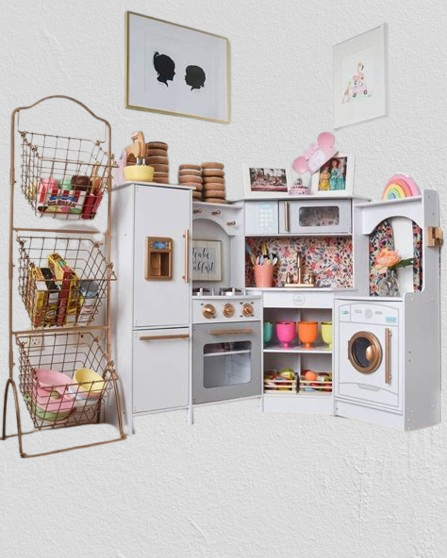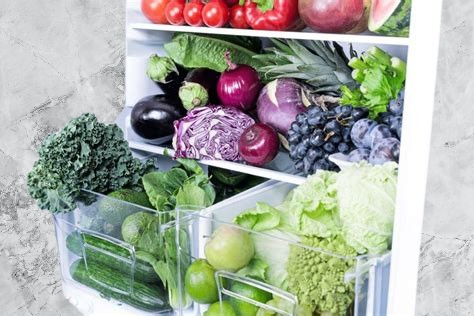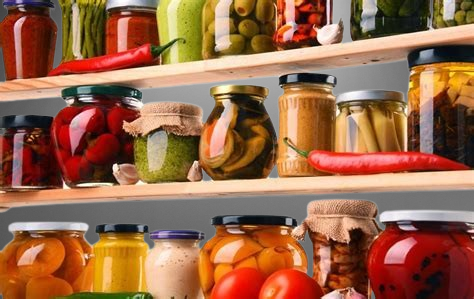Table of Contents
Proper storage of vegetables and fruits is essential for maintaining their freshness and nutritional value. When produce is inadequately stored, it undergoes physical changes that can lead to spoilage. The deterioration process is often visible through wilting, discoloration, and the presence of mold. These changes not only compromise the aesthetic appeal of fruits and vegetables but also negatively impact their flavor. When stored improperly, the natural sugars found in produce can break down, resulting in a bland and unpalatable taste.
Moreover, nutrient degradation is a significant concern. Many vitamins and minerals present in fresh fruits and vegetables are sensitive to environmental factors such as light, temperature, and humidity. For instance, storing leafy greens at room temperature can cause them to lose their nutrient content rapidly. By employing proper storage methods, the biochemical processes that lead to nutrient loss can be slowed down, allowing consumers to maximize the health benefits associated with fresh produce.
Economically, effective storage techniques are crucial for reducing waste, which has both personal and environmental ramifications. By avoiding spoilage, households can save money, as a significant portion of consumer spending on fruits and vegetables is wasted due to improper storage. In a broader context, reducing food waste contributes to a decrease in the overall waste generated, which is beneficial for the environment. Thus, understanding the importance of proper storage not only enhances the quality and longevity of fruits and vegetables but also supports economic and environmental sustainability.
Optimal Conditions for Storing Vegetables

Storing vegetables properly is essential in maximizing their shelf life and maintaining their quality. Different categories of vegetables have unique requirements regarding temperature, humidity, and light exposure, contributing to their preservation. Understanding these conditions can greatly enhance both taste and nutritional value.
Root vegetables, such as carrots, potatoes, and beets, thrive in a cool, dark environment. The ideal storage temperature for these vegetables is around 32°F to 40°F (0°C to 4°C). A humid root cellar or a drawer in the refrigerator with high humidity is ideal, as it helps to prevent dehydration while avoiding excess moisture that can promote rot. Keeping them in breathable bags or crates prevents them from becoming too moist, while also blocking light, which can lead to sprouting.
Leafy greens, including spinach, lettuce, or kale, require cooler temperatures and higher humidity to stay fresh. The best storage temperature ranges from 32°F to 36°F (0°C to 2°C). To create optimal conditions, it is advisable to store them in perforated plastic bags or containers that retain some moisture without waterlogging. Placing a damp paper towel inside the bag can help maintain humidity levels while keeping the greens crisp.
Cruciferous vegetables such as broccoli, cauliflower, and Brussels sprouts also prefer cool, humid conditions. The recommended temperature for these vegetables is similar to that of leafy greens, around 32°F to 36°F (0°C to 2°C). They should be stored in a ventilated area to allow air circulation, which helps prevent spoilage. A dedicated crisper drawer in the refrigerator is often suitable for these vegetables.
By adhering to these tailored tips based on vegetable categories, home cooks can extend the freshness of their produce while retaining essential nutrients and flavors, ultimately contributing to healthier meal preparations.
Best Practices for Storing Fruits

Proper storage of fruits is essential to maintain their freshness, flavor, and nutritional value. Each type of fruit has unique requirements that can significantly impact its longevity. Understanding these needs will help consumers maximize the shelf life of their produce while minimizing waste. One critical factor in fruit storage is temperature. Some fruits, like apples and pears, benefit from refrigeration, which can slow down the ripening process. Other fruits, such as bananas, avocados, and tomatoes, should be kept at room temperature until they are fully ripe, as cold conditions can negatively affect their texture and flavor.
The ripening process is also influenced by ethylene gas, a naturally occurring plant hormone released by certain fruits. Ethylene gas can accelerate ripening, so grouping ethylene-producing fruits—such as bananas, apples, and avocados—together can facilitate natural ripening. Conversely, keeping ethylene-sensitive fruits, like strawberries and broccoli, away from these can prevent premature spoilage. This practice allows for greater control over fruit maturation and helps manage freshness longer.
When storing fruits in the kitchen, it is crucial to avoid washing them before storage, as moisture can promote mold growth and decay. Instead, wash fruits just before consumption. Additionally, storing fruits in breathable containers can enhance air circulation, which helps prevent the buildup of moisture that fosters spoilage. For some fruits, such as berries, using shallow containers lined with paper towels can absorb excess moisture and prevent bruising.
Combining fruits in storage should also be approached with care. For example, it is advised to keep fruits that produce high amounts of ethylene gas away from those that are sensitive to it to prolong their freshness. By following these best practices for storing fruits, one can enjoy a variety of flavors and nutrients while reducing food waste.
Innovative Storage Solutions for Your Kitchen

When it comes to preserving the freshness of fruits and vegetables, implementing innovative storage solutions in your kitchen can make a significant difference in longevity and quality. One of the most effective methods involves utilizing modern storage containers specifically designed to extend the life of produce. These containers often feature venting systems that regulate humidity, preventing moisture accumulation that can lead to spoilage. Glass containers, with their airtight seals, not only keep fruits and vegetables fresh but also allow you to see contents at a glance, making meal prep more efficient.
Drawer organization is another key aspect of fruit and vegetable storage. Dedicated bins and baskets can be employed to separate ethylene-producing fruits, such as apples and bananas, from more sensitive vegetables. This separation can prevent premature rotting and maintain the vitality of your produce longer. Consider using expandable drawer dividers, which can adapt to the size of your fruits and vegetables, ensuring they are stored snugly without crushing. Labeling drawers or bins can also help streamline your cooking process, allowing for quick access to necessary ingredients.
In recent years, smart technology has begun to revolutionize food storage. Smart refrigerators equipped with built-in sensors can monitor humidity levels and temperature, adjusting their settings automatically to create optimal conditions for fruits and vegetables. Some models even feature interior cameras, enabling you to check your fridge’s contents remotely. These advancements not only promote better produce storage but can also help reduce food waste by allowing you to manage your inventory effectively.
Incorporating these innovative storage solutions into your kitchen will not only enhance the longevity of your fruits and vegetables but will also contribute to a more organized and efficient cooking experience. Explore various DIY ideas, such as upcycled jars and custom spacers, to tailor your storage setup to your specific needs. With the right approach, maintaining fresh produce can become a seamless part of your daily routine.


